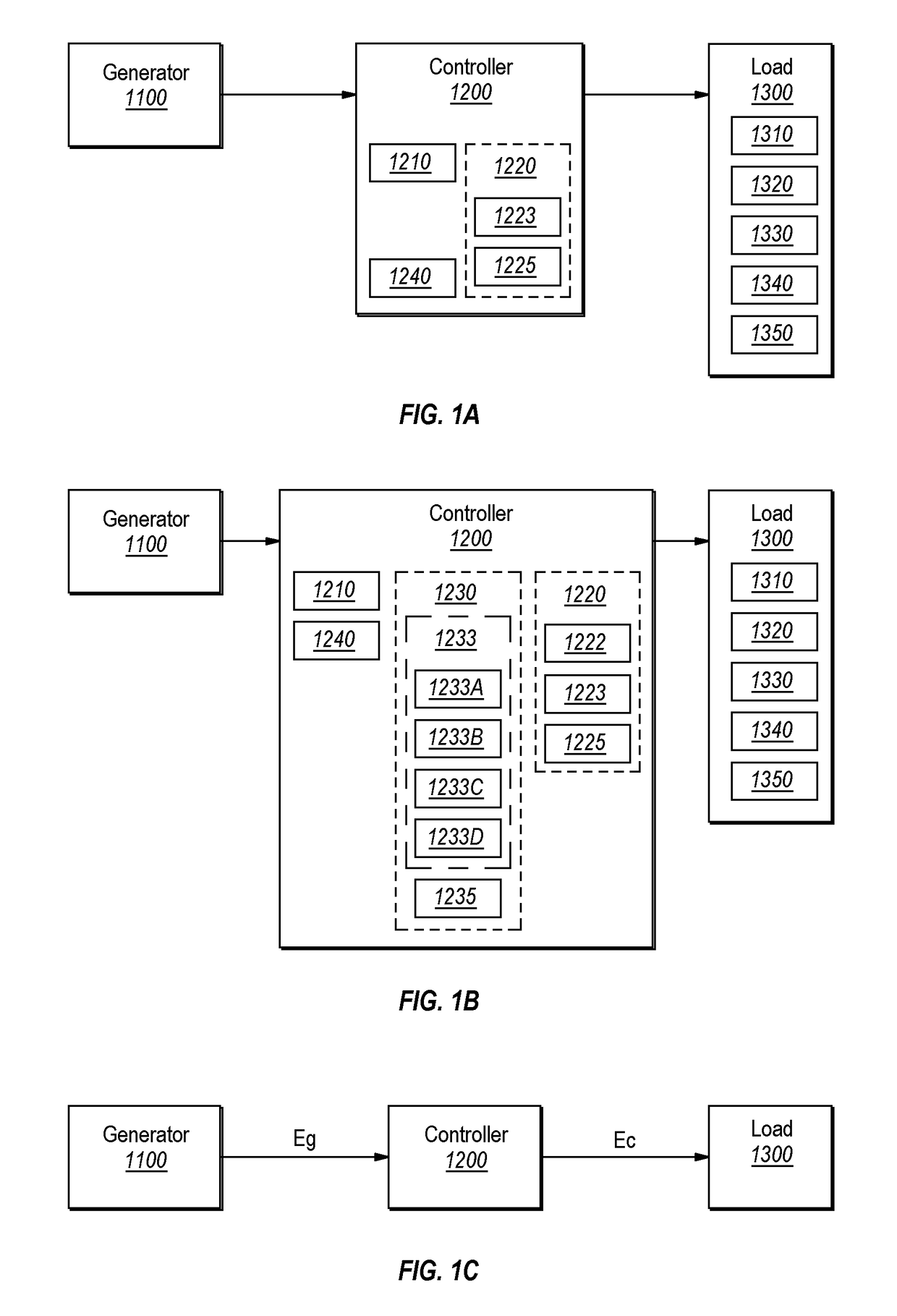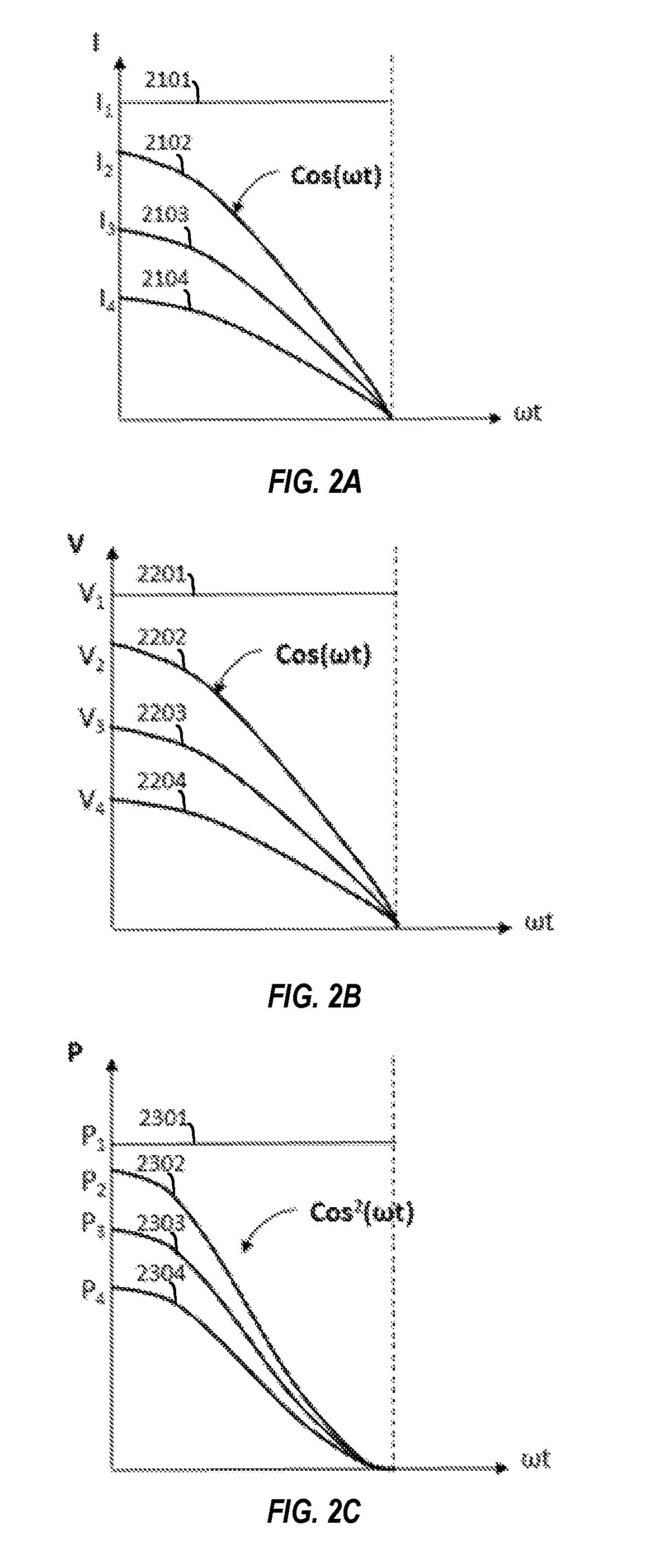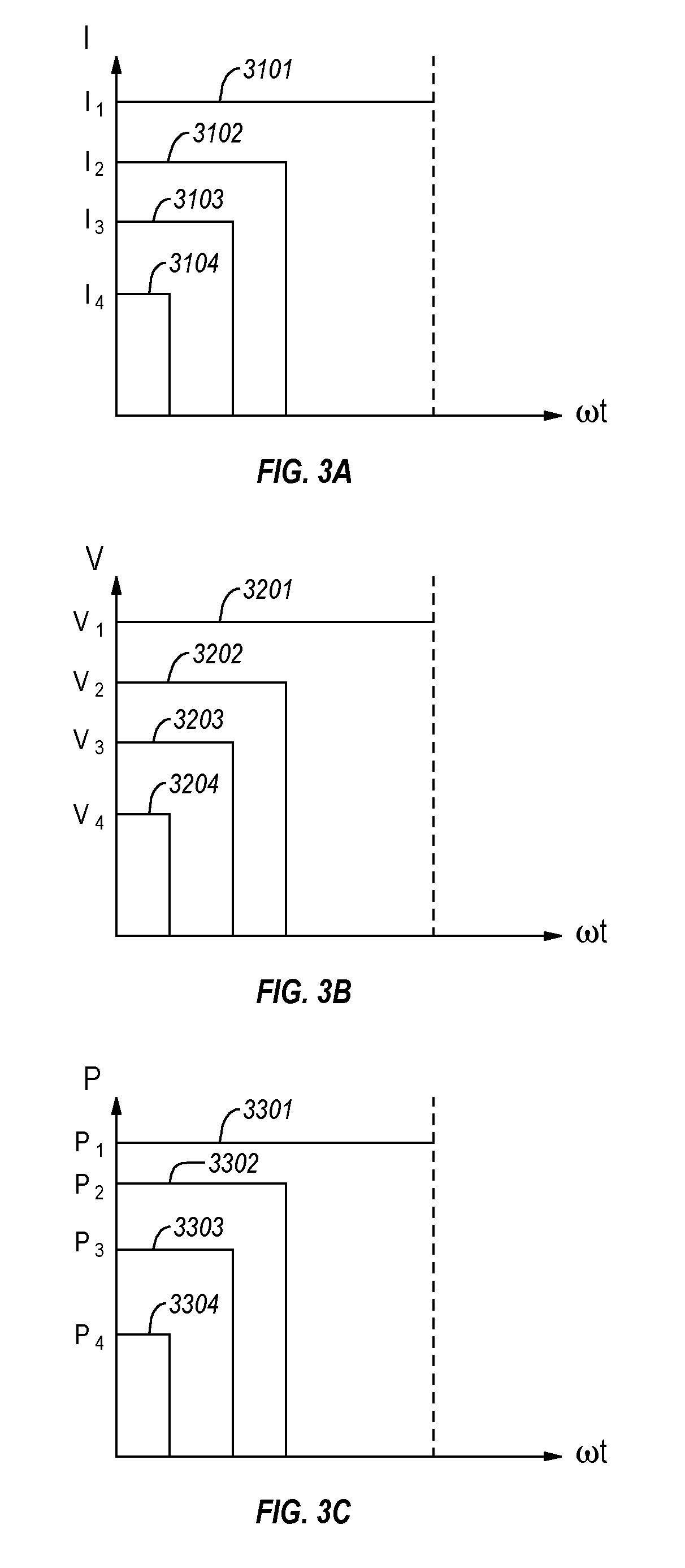Maximum energy utilization point tracking technologies
a technology of maximum energy utilization and tracking technology, applied in greenhouse gas reduction, process and machine control, instruments, etc., can solve the problems of inextricable energy utilization efficiency, blind mppt practice does not match the characteristics of the energy extraction device, blind mppt practice does not match the device to prepare and/or deliver the extracted energy,
- Summary
- Abstract
- Description
- Claims
- Application Information
AI Technical Summary
Benefits of technology
Problems solved by technology
Method used
Image
Examples
Embodiment Construction
[0031]Section One: Review on Energy System
[0032]An energy system 1000 consists of generator(s) 1100, regulator(s) 1200, load(s) 1300; and all their module(s) thereof, which are described hereinafter and are depicted in FIGS. 1A, 1B and 1C. FIG. 1A depicts a conventional energy system block diagram; while FIG. 1B depicts a block diagram structure of an energy system in accordance with the principles described herein. The efficiency of any given subsystem is defined herein as the output of the given subsystem divided by the output of the previous subsystem. As a typical example, the regulator (or controller) efficiency is defined as the energy delivered to the load (Ec) divided by the energy produced by the generator (Eg) as depicted in FIG. 1C. The names of the modules depicted in FIG. 1 are listed as follows:[0033]1000: Energy system,[0034]1100: Generator,[0035]1200: Controller or regulator,[0036]1210: Conventional energy extraction device,[0037]1220: Module or device,[0038]1222: En...
PUM
 Login to View More
Login to View More Abstract
Description
Claims
Application Information
 Login to View More
Login to View More - R&D
- Intellectual Property
- Life Sciences
- Materials
- Tech Scout
- Unparalleled Data Quality
- Higher Quality Content
- 60% Fewer Hallucinations
Browse by: Latest US Patents, China's latest patents, Technical Efficacy Thesaurus, Application Domain, Technology Topic, Popular Technical Reports.
© 2025 PatSnap. All rights reserved.Legal|Privacy policy|Modern Slavery Act Transparency Statement|Sitemap|About US| Contact US: help@patsnap.com



